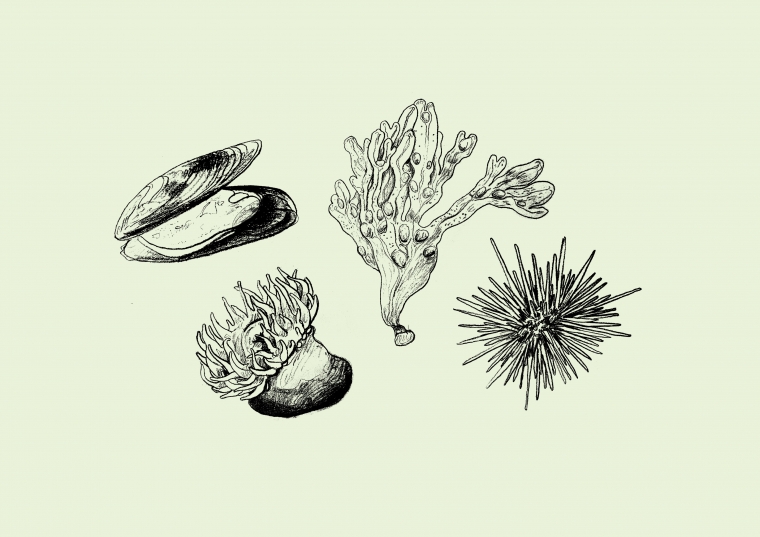What is an MPA?
Shifting the perspective on how a Marine Protected Area is defined subverts conventional notions of what is an MPA, while possibly jeopardising its status. It is one way to show what other worlds may be possible, and to provoke new perceptions and understandings of the political, physical, and cultural boundaries of an MPA.
Dani Admiss and Gillian Russell
Answering the question “What is an MPA?” requires us first to create and communicate a definition of a marine protected environment. In other words, we must make the MPA “visible” through language and classification. The International Union for Conservation of Nature (IUCN) is the global authority on the status of the natural world and the measures needed to safeguard it. They define an MPA as “a protected area in a clearly defined geographical space, recognised, dedicated and managed, through legal or other effective means, to achieve the long-term conservation of nature with associated ecosystem services and cultural values”. This definition, although suitable to the marine conservation sector, elides contemporary cultures such as technology, pollution and social norms which intersect with marine protected areas. To challenge this partial and singular understanding of what an MPA is, we chose to rewrite an expanded, partial timeline of marine protected areas. Timelines are technologies of “world-making”. They create stories and demonstrate histories and achieve this by making time and space appear to be a progressive line of succession: first came X and then came Y.
Our alternative timeline brings together varied histories of aquatic conservation, aquaculture, marine biodiversity tracking and monitoring, marine popular culture, and plastics, as well as the effect plastic pollution has exerted on waste and Public Health.
By including these separate but related timelines in our definition, we show that: 1. the evolution of tools which allowed marine biodiversity tracking and monitoring moved forward an understanding of what is – and by extension what needs to be – protected in our oceans; 2. that watershed moments in popular culture changed public awareness of marine biodiversity leading to greater ecological action; 3. that International Laws, Acts and systems of marine management demonstrate what people valued about the oceans at different points in history: as a resource, as recreation or as spiritual value. It is important to note that this is a partial history – one could add many other more detailed layers shifting the focus and ultimately changing the perspective on the story of an MPA.
Shifting the perspective on how an MPA is defined subverts conventional notions of what is an MPA, while possibly jeopardising its status. It is one way to show what other worlds may be possible, and to provoke new perceptions and understandings of the political, physical, and cultural boundaries of an MPA. Not only is there renewed attention to the multiple powers at play, but drawing attention to the lesser-known stories attached to MPAs has also instigated a redefinition of these spaces, not simply as sites for conservation and environmental protection of marine species and ecosystems, but as the object of a social challenge. To conserve and protect these designated areas ultimately requires unmaking and remaking our social worlds.
|
This text is originally presented in one of the panels of the exhibition that accompanies the Disturbing Conservation: Remapping the Avencas MPA event at maat (12-18/10/2020). The "What is an MPA?" exhibit is a description of marine protected zones presented as an expanded timeline of their development. Beginning with the pre-colonial age and ending in 2020, the aim is to enliven histories of ecological conservation. Viewers can follow a story of MPAs through various threads and connections, some of which may stir up trouble.
|
Disturbing Conservation: Remapping the Avencas MPA is an alternative Interpretation Centre for the Avencas Marine Protected Area (MPA, in Cascais, Portugal). The work is designed to question critically and creatively what role creative institutions might play in ecological conservation initiatives? And how the public can reconsider their responsibility and relationship to Marine Protected Areas?
|
Photo: © Stuart Rankin.





